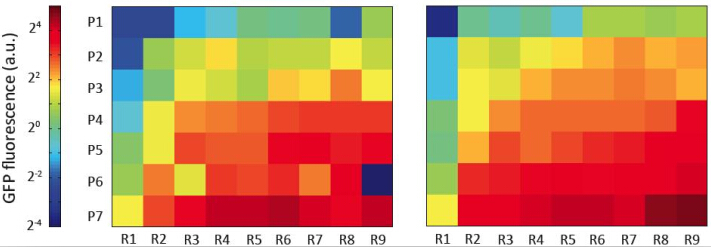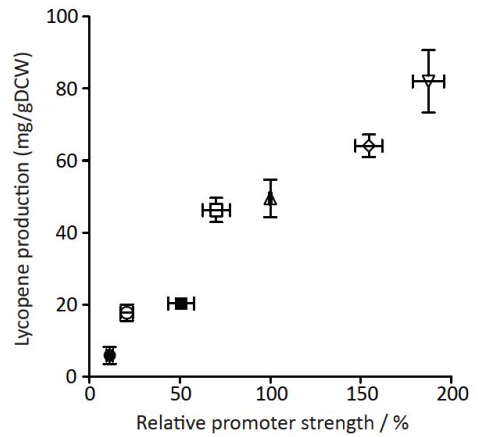Synthetic biology focused on the engineering and modularization of systems, leading to significant breakthroughs in the field of energy, medicine and so on. Filamentous microorganism (e.g., fungi, actinomycetes) was the major source of secondary metabolites, producing about 90% of known antibiotics.
Even though the genome size of Streptomyces is significantly smaller than that of Saccharomyces cerevisiae, it has more ORFs than its eukaryotic counterparts, a substantial part of which regulate the transcriptional and translational machineries of gene clusters responsible for the biosynthesis of secondary metabolites.
Nevertheless, convenient and precise approach for characterization of the relevant transcriptional and translational elements in Streptomyces has become a bottleneck in the effort to activate the cryptic gene clusters.
Recently, joint work from Profs. LOU Chunbo and ZHANG Lixin’s groups at the Institute of Microbiology, Chinese Academy of Sciences (IMCAS) developed a flow cytometry-based method of quantification for gene expression in Streptomyces at single-cell resolution.
Single cells of filamentous bacteria were obtained by releasing the protoplasts from the mycelium, and the dead cells could be distinguished from the viable ones by propidium iodide (PI) staining.
With this sophisticated quantitative method, some 200 native or synthetic promoters and 200 ribosomal binding sites (RBSs) were characterized in a high-throughput format.
Furthermore, an insulator RiboJ was recruited to eliminate the interference between promoters and RBSs and improve the modularity of regulatory elements. Seven synthetic promoters with gradient strength were successfully applied in a proof-of-principle approach to activate and overproduce the cryptic lycopene in a predictable manner in Streptomyces avermitilis and the highest titer reached 82 mg/g DCW.
The work presented a novel quantitative strategy and universal synthetic modular regulatory elements, which will facilitate the functional optimization of gene clusters and the drug discovery process in Streptomyces.
This work was supported in part by the Ministry of Science and Technology of China and the National Natural Science Foundation. It was published on Proceedings of the National Academy of Sciences USA (http://www.pnas.org/content/early/2015/09/14/1511027112).
Prof. ZHANG led a National Basic Research Program of China (973 Program) to deeply learn the fundamental discipline of Streptomyces, realizing the precise design, standard biosynthesis, fine-tuning regulation of the life process of Streptomyces. Since the program was launched in 2013, the teams in IMCAS have published papers on Nature, Nature Communications, PNAS, Angewandte Chemie International Edition, Metabolic engineering, Molecular Microbiology, etc.

Fig. 1 Workflow of single-cell quantification for gene expression in Streptomyces by flow cytometry

Fig. 2 Performance of the RiboJ insulator in Streptomyces to eliminate interferences between the promoter and RBS.

Fig.3 Lycopene production in S. avermitilis under the control of different promoters with the presence of RiboJ.